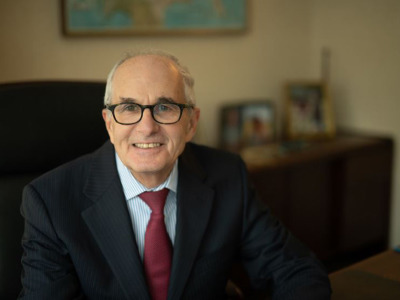Schools across the country are facing an unbelievable challenge this next school year. There are some 100,000 schools in the U.S. with approximately fifty million students.
Many of these schools do not even know when the school year will start, or whether they will even open. At the same time, family income is changing monthly as the unemployment rate rises and falls.
Traditionally, schools open after Labor Day and school administrators send home a free and reduced-price meal application with the other paperwork. School food administrators then must process the application, verify the income data, and determine who qualifies for a free or reduced-price breakfast and lunch. At best, it is a very labor-intensive administrative process.
The federal government knows our personal income and so do the states. There must be a better way to structure the national school lunch and breakfast program, but that is for another day. Given the extraordinary demands that schools will face, we believe this process should be waived in the 2020-2021 academic year and the cost of feeding all children should be absorbed as part of the country’s COVID expenses.
The cost of this proposal is not known because, as the unemployment rate increases and the number of children who qualify for free and reduced-price meals also increases, concomitantly, the marginal cost of this proposal will decrease. There will be a cost to this proposal but whatever it is will be small compared to what the federal government is investing to get the country’s economy moving again. That figure may reach another trillion dollars on top of what has been appropriated.
The 1969 White House Conference on Food, Nutrition and Health clearly established that hungry children do not learn as much. President Nixon, who hosted the Conference, made this point: “A child ill-fed is dulled in curiosity, lower is stamina, distracted in learning.” The Congress then enacted several programs based on that finding. We cannot fall back on our commitment to children and allow the current pandemic to cost us a generation of students who fall behind in their education.
The cost of the Pandemic School Meals Program we are proposing must be balanced against the earning potential of well-educated children and the administrative expense of 100,000 schools trying to track down family income of millions of children who apply for free and reduced price meals under the current program, knowing that it can change every month for millions of those children.
We are thinking about the rural schools in Kansas, in South Dakota, and all schools, big and small, around the country. Investing in children is always a smart investment to make. It is especially true when we are facing an extraordinary pandemic that is still spiking in many states.
Dr. Katie Wilson, Director of the Urban School Food Alliance, which includes the largest school systems in the county, recently noted that, “Schools may be closed, but school food services are not. Workers have shifted from monitoring the breakfast and lunch lines to packing grab-and-go meals, sending school bus drives to reach homeless students, creating transportation alliances with city buses, and using other creative ways to reach children.”
In this environment, where no one knows what the fall will bring, we should implement a Pandemic School Meals Program.
Bob Dole represented the State of Kansas in Congress and was the Republican Leader of the Senate.
Marshall Matz served both Senator Dole and Senator George McGovern as (Democratic) Counsel to the Senate Committee on Agriculture, Nutrition and Forestry.


